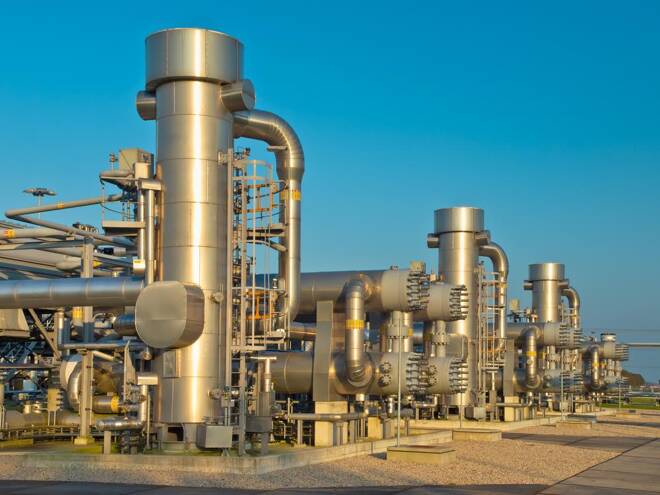Advertisement
Advertisement
Natural Gas Price Fundamental Daily Forecast – Fundamentals Bearish but Poised for Technical Reversal Bottom
By:
NatGasWeather characterized the latest weather data as “emphatically bearish” during the October 27-November 2 time frame.
Natural gas futures are inching lower at the mid-session on Monday after touching its lowest level since September 23 earlier in the session. Forecasts calling for lower weather-driven demand were the catalysts behind the weakness.
Weather-driven demand has been “crumbling,” with EBW estimating a 12 Bcf drop in cumulative demand for the second and third upcoming storage weeks (between Friday and November 4) based on the latest model runs, Natural Gas Intelligence (NGI) reported.
At 15:32 GMT, December natural gas futures are trading $5.265, up $0.029 or +0.55%.
EBW Analysts See ‘Soft Near-Term Fundamentals’
“European natural gas failed to maintain gains in the aftermath of a bullish pipeline capacity auction,” EBW analysts said. Liquefied natural gas (LNG) feed gas nominations “slipped below the seven-day average to 10.75 Bcf/d.”
Bearish technical momentum and “soft near-term fundamentals” could see prices slide further Tuesday, but hints of a shift to colder temperatures in November could “quickly reverse” the recent price weakness, the EBW analysts added.
NatGasWeather Data ‘Emphatically Bearish’
NatGasWeather characterized the latest weather data as “emphatically bearish” during the October 27-November 2 time frame, when above-normal temperatures are forecast to dominate across the eastern two thirds of the Lower 48, NGI reported.
“The latest weather data also wasn’t any better for Asia as warmer than normal conditions are favored through late October into early November,” NatGasWeather said. “There will be decent cool shots into northern Europe, although with weather patterns still a bit too comfortable over western and southern Europe. Essentially, all three major demand regions (U.S., Asia, Europe) will need to wait on widespread cold until November.”
Early Peek at Thursday’s Government Storage Report
An early look at Thursday’s Energy Information Administration (EIA) weekly storage report has Energy Aspects issuing a preliminary estimate for an 80 Bcf injection for the week ended October 15.
“A plunge in domestic production and returning feed gas for LNG exports will keep storage activity flat week/week, despite a 2.6 Bcf/d reduction in power” demand, according to the firm.
The five-year average injection is 69 Bcf, while a 49 Bcf build was recorded for the year-earlier period, according to the EIA.
Short-Term Outlook
The early selling pressure confirmed the downtrend, but a successful test of a key technical retracement zone and a mid-session recovery suggests the market may have found a value zone. This could trigger the start of a 2 to 3 day counter-trend rally.
The key support is the 50% to 61.8% zone at $5.269 to $4.956.
For a look at all of today’s economic events, check out our economic calendar.
About the Author
James Hyerczykauthor
James Hyerczyk is a U.S. based seasoned technical analyst and educator with over 40 years of experience in market analysis and trading, specializing in chart patterns and price movement. He is the author of two books on technical analysis and has a background in both futures and stock markets.
Advertisement
